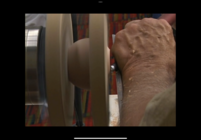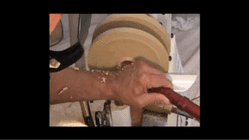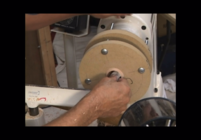Good day team!
I have a question that arises out of my endless desire to experiment and improve.
Let's assume we're talking about a standard parabolic fluted bowl gouge sharpened using something like the Ellsworth or Wolverine jig. The usual "go-to grind" for most bowl turning.
We all know an 8" grinder wheel gives better profiles than a 6", at least in part because the grind is less hollow.
What if we were able to get a actual flat grind? Would that be a better grind, generally speaking, for most bowl turning situations?
I'm not really sure that a flat grind is possible using round wheels unless you are satisfied with the idea of the grinder contacting the gouge sideways (imagine a CBN wheel mounted in a drill press horizontally).
But if a flat grind were possible, would it likely be an improvement?
I have a question that arises out of my endless desire to experiment and improve.
Let's assume we're talking about a standard parabolic fluted bowl gouge sharpened using something like the Ellsworth or Wolverine jig. The usual "go-to grind" for most bowl turning.
We all know an 8" grinder wheel gives better profiles than a 6", at least in part because the grind is less hollow.
What if we were able to get a actual flat grind? Would that be a better grind, generally speaking, for most bowl turning situations?
I'm not really sure that a flat grind is possible using round wheels unless you are satisfied with the idea of the grinder contacting the gouge sideways (imagine a CBN wheel mounted in a drill press horizontally).
But if a flat grind were possible, would it likely be an improvement?



